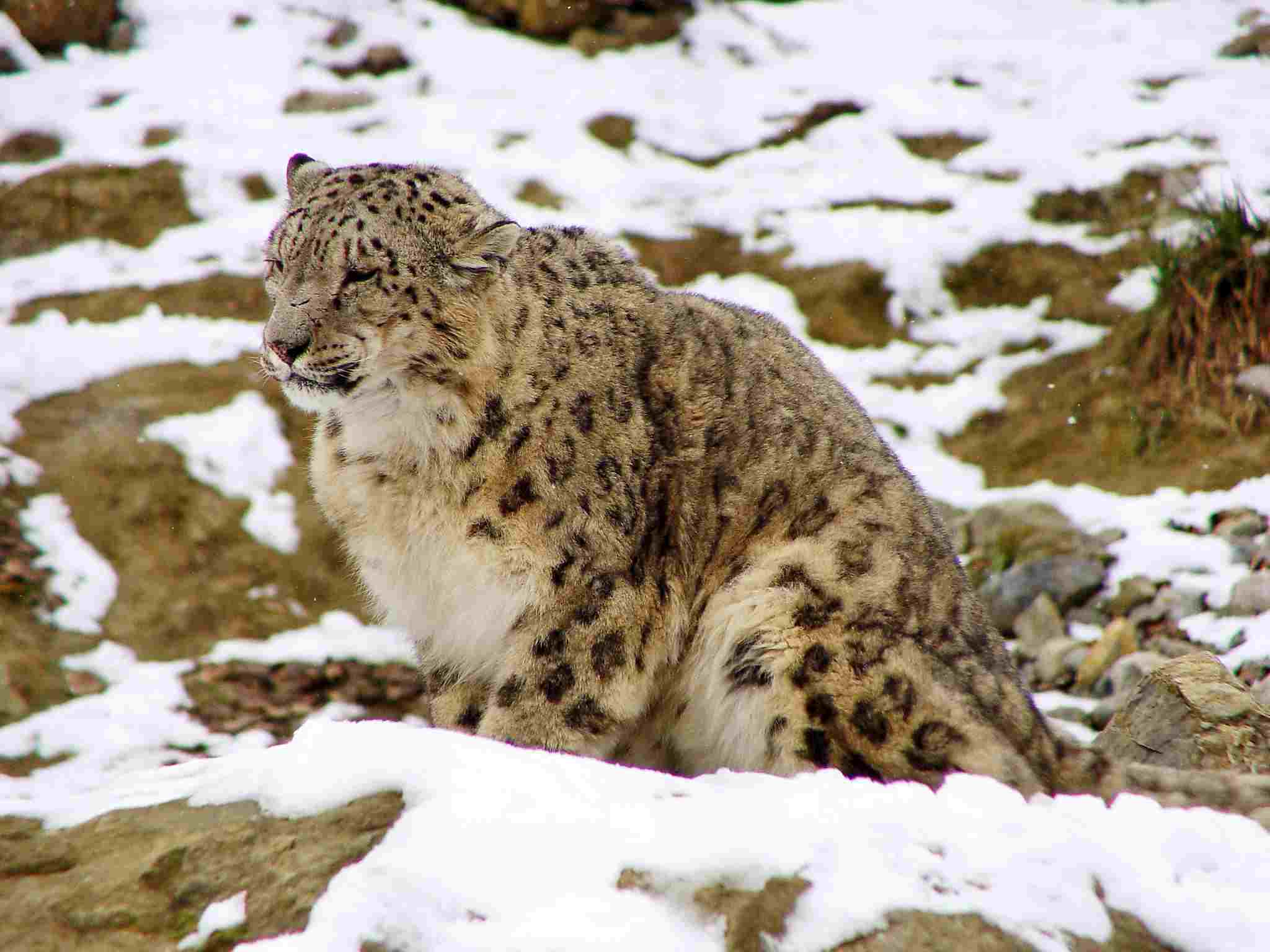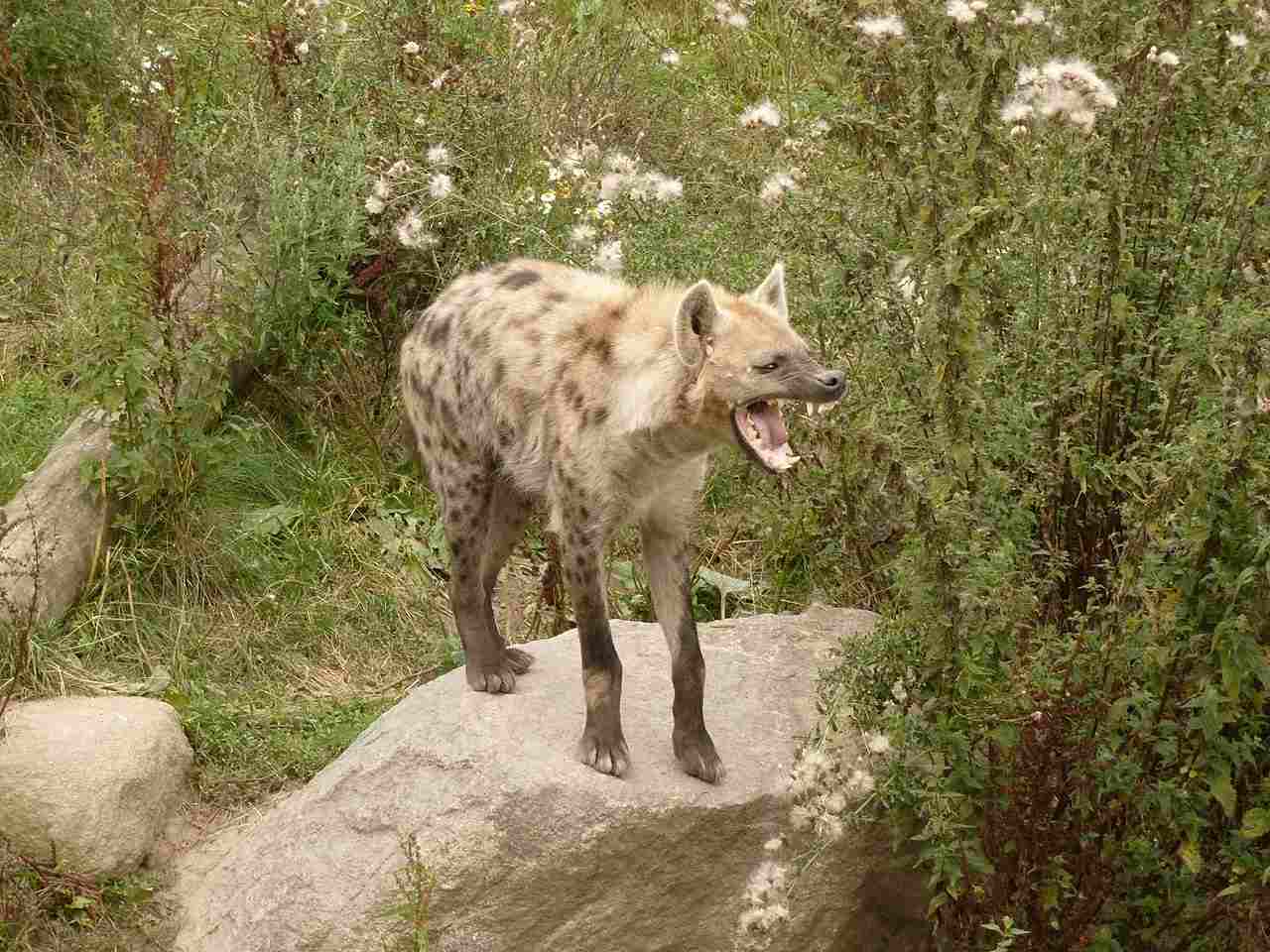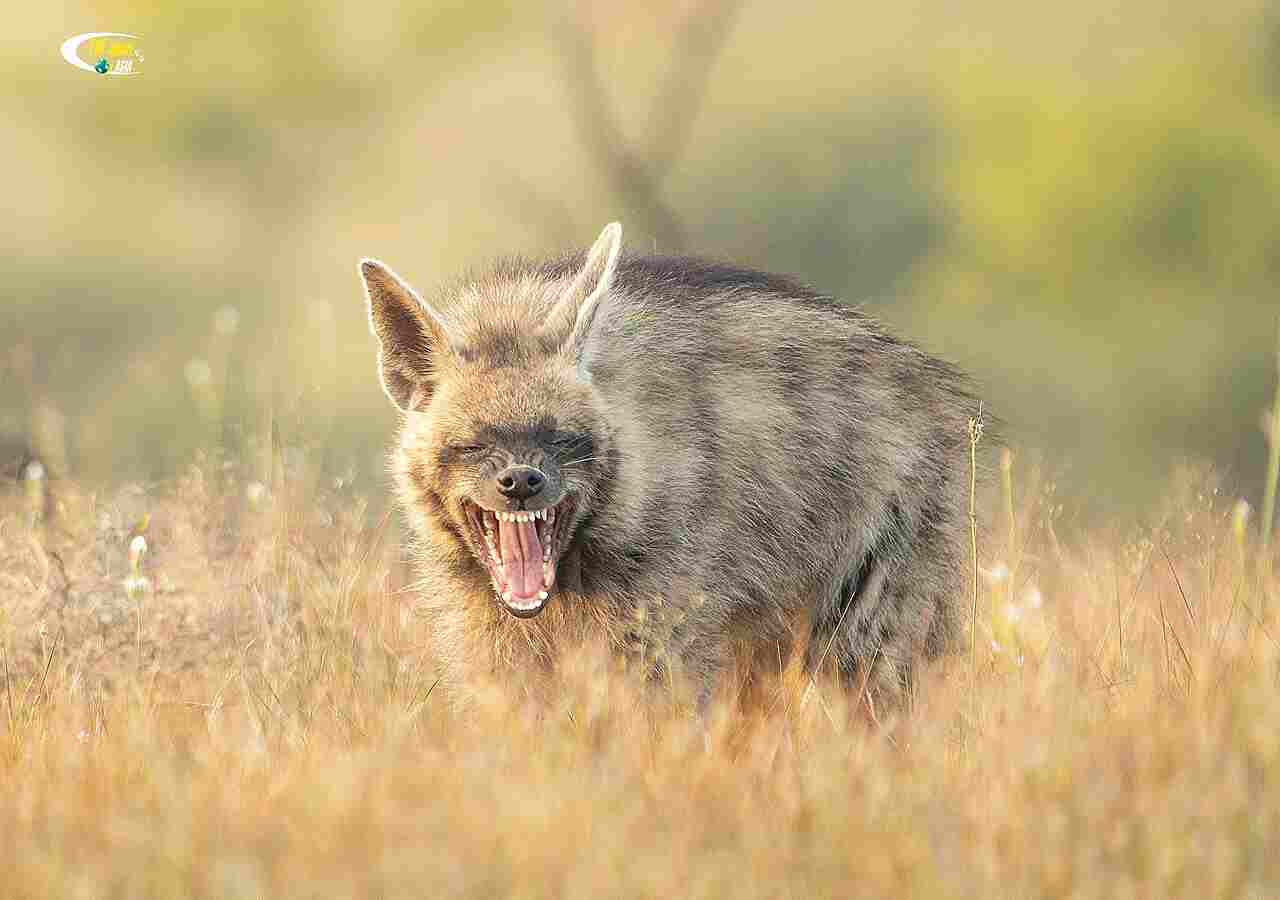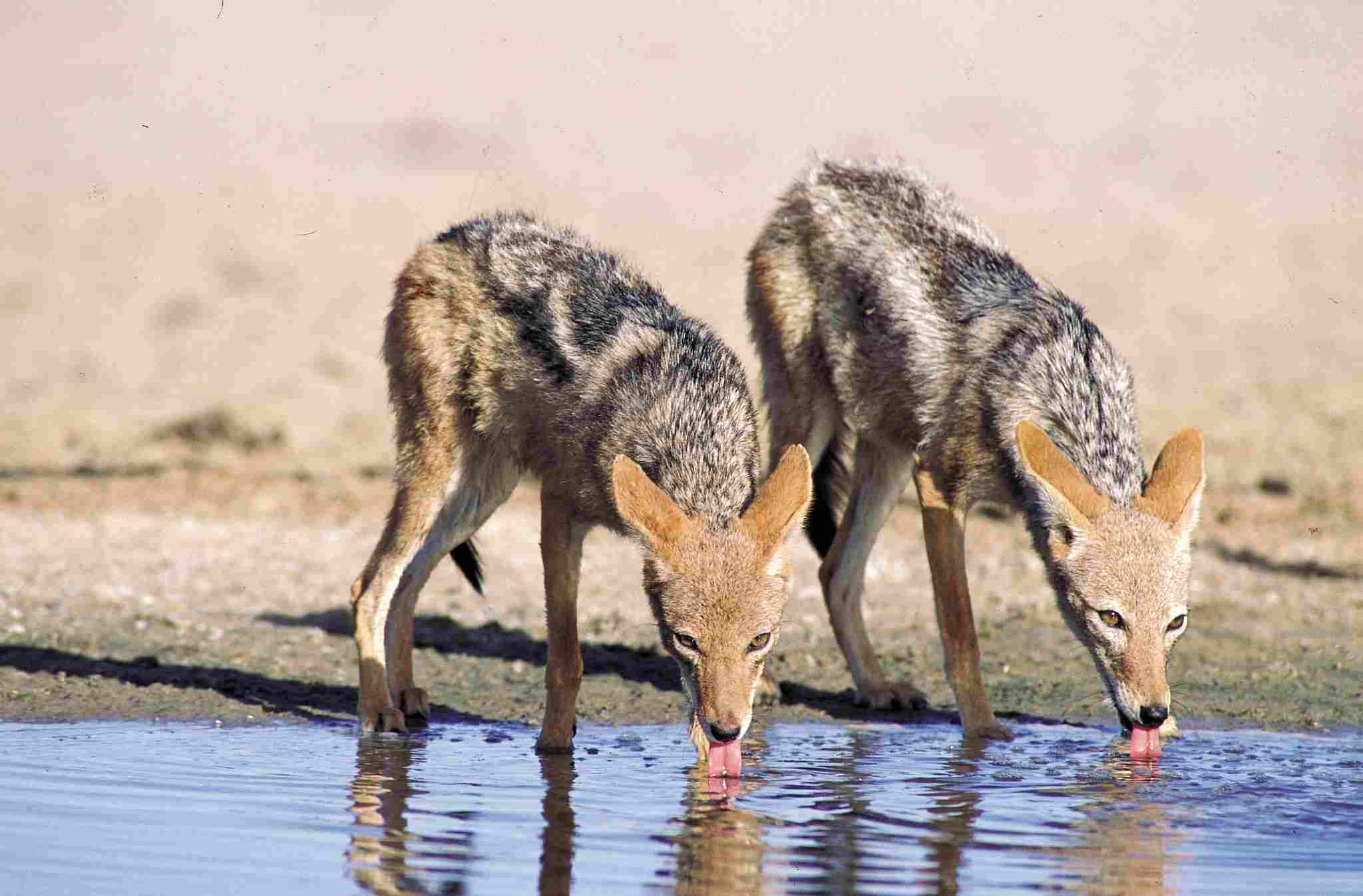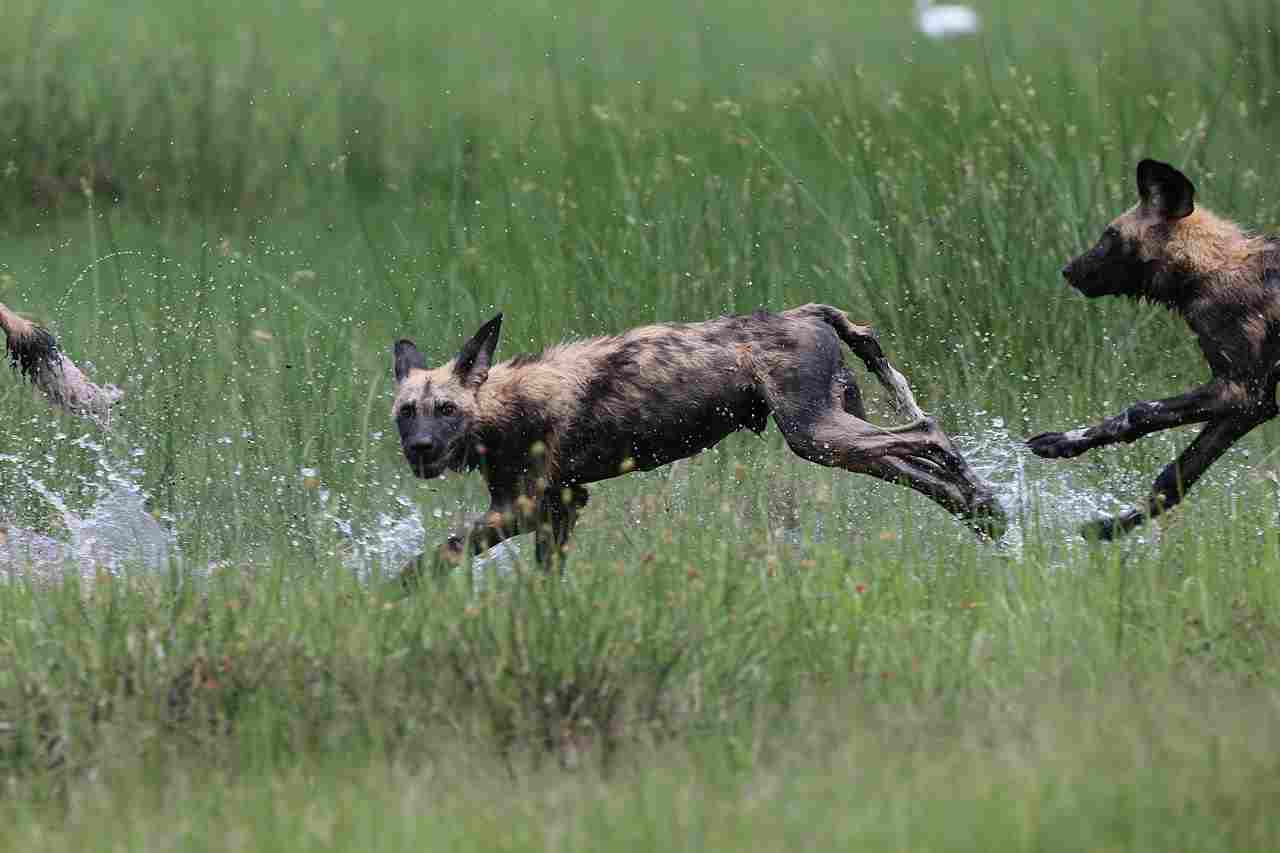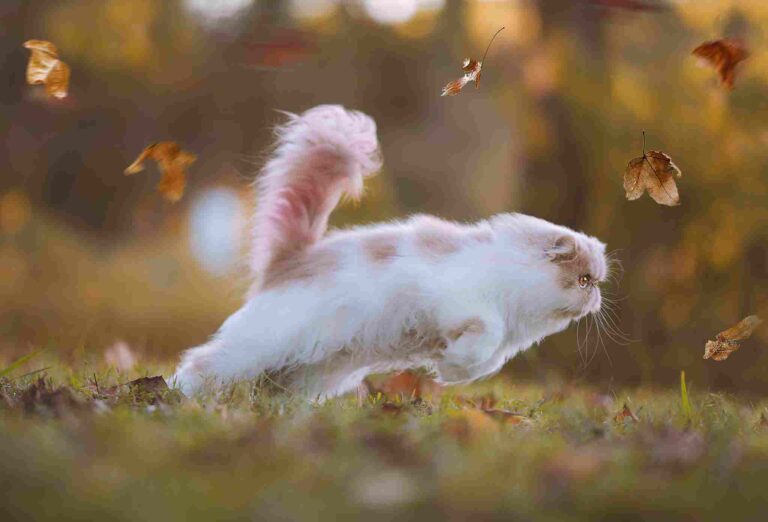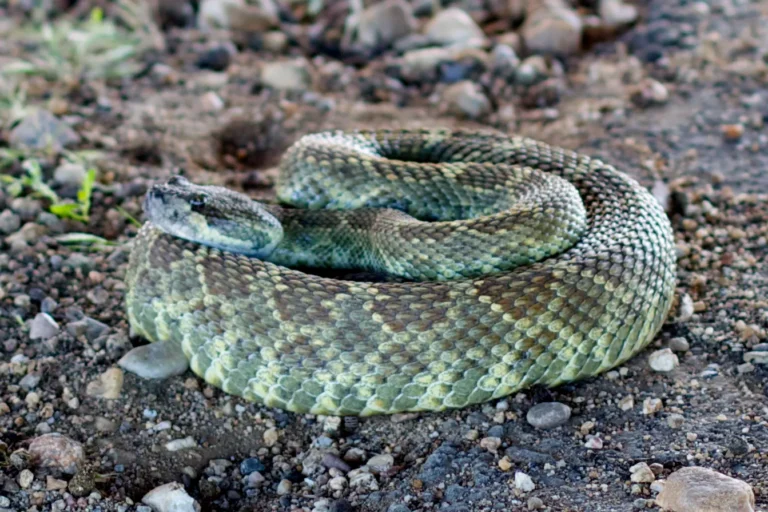Hyena Vs Leopard Size, Weight, Ecological Comparison
A leopard will kill a single hyena because it is much more agile, skilled as a hunter, ferocious, and equipped with better predatory features. However, multiple hyenas will overpower a leopard using their cooperative tactics.
Various factors can be used to compare and assess these two animals, as shown in this article.
Reasons Why a Leopard Will Win a Hyena In a Fight/Physical Confrontation
I). Agility
One of the main reasons why a leopard would win in a fight against a hyena is its agility. Leopards are incredibly nimble and can move swiftly through trees and rocky terrain. This gives them a significant advantage when it comes to chasing and catching prey. Their ability to climb trees also allows them to escape from potential threats, including hyenas.
II). Hunting Skill
Leopards are known for their exceptional hunting skills. They are stealthy predators that rely on their ability to stalk and ambush their prey. With their keen senses and powerful muscles, leopards can silently approach their target and launch a surprise attack. This level of hunting expertise gives them an upper hand in a physical confrontation with a hyena.
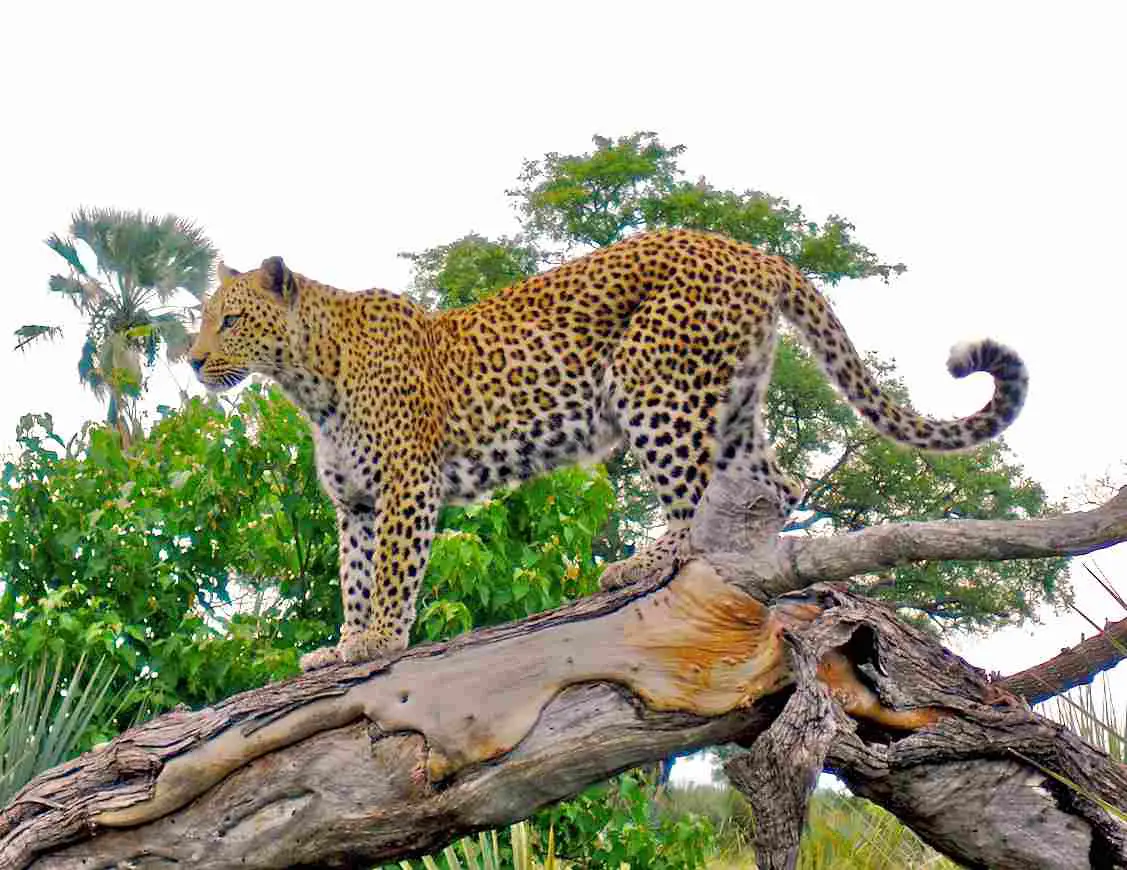
III). Ferocity and Superior Predatory Attributes
Leopards possess a ferocity and a set of superior predatory attributes that make them formidable opponents. They have sharp claws and powerful jaws that can deliver a lethal bite. (although the bite force of hyenas is also strong) Additionally, leopards have a muscular build and are capable of taking down prey larger than themselves. These attributes, combined with their aggressive nature, make them more likely to come out victorious in a fight against a hyena.
*Details of Comparison
1). Taxonomy
Hyenas belong to the family Hyaenidae, which includes four extant species: the spotted hyena (Crocuta crocuta), the brown hyena (Hyaena brunnea), the striped hyena (Hyaena hyaena), and the aardwolf (Proteles cristata). These species are further classified into different genera and species based on their physical characteristics and genetic makeup.
On the other hand, leopards are part of the Panthera genus, which also includes other big cats like lions, tigers, and jaguars. The scientific name for leopards is Panthera pardus. They are known for their distinctive rosette patterns on their fur, which help them blend into their surroundings.
When comparing the taxonomy of hyenas and leopards, it is evident that they belong to different families and genera. While hyenas are more closely related to mongooses and civets, leopards share a closer evolutionary relationship with other big cats.
The taxonomy of these animals provides a foundation for further evaluation of their physical characteristics, behavior, and ecological roles.
2). Appearance
Hyenas and leopards have distinct appearances that contribute to their survival in their respective habitats. Starting with their coats, both animals have unique fur patterns.
Hyenas have a coarse and shaggy coat, which is usually spotted or striped, depending on the species. This pattern helps them blend into their surroundings, making it easier for them to approach prey or avoid detection. On the other hand, leopards have a beautiful coat adorned with rosette patterns. These rosettes provide excellent camouflage in the dappled light of the forest or grasslands, allowing them to stalk their prey undetected.
In terms of stature and build, hyenas and leopards differ significantly. Hyenas have a robust and stocky build, with a sloping back and powerful forelimbs. This build gives them the strength and endurance to scavenge and hunt for food. Leopards, on the other hand, have a more sleek and agile physique. They are known for their graceful movements and ability to climb trees effortlessly. Their muscular bodies and long limbs enable them to navigate through various terrains with ease.
When comparing the appearance of hyenas and leopards, it is clear that their coats, camouflage abilities, and physical structures are adapted to their specific ecological roles.
3). Size
When comparing the size of hyenas and leopards, it is important to consider their total body length and height at the shoulders. Hyenas are generally larger than leopards in terms of body size. The average total body length of a hyena can range from 4 to 5.9 feet, depending on the species. In contrast, leopards have a total body length ranging from 3.5 to 6.2 feet.
In terms of height at the shoulders, hyenas stand taller than leopards. On average, hyenas can reach a height of 2.3 to 3.3 feet at the shoulders, while leopards have a shoulder height ranging from 1.8 to 2.6 feet.
These differences in size between hyenas and leopards can have implications for their hunting and survival strategies. The larger size of hyenas allows them to take down larger prey and scavenge on carcasses more effectively. On the other hand, leopards’ smaller size and agility enable them to climb trees and ambush their prey from above, giving them an advantage in certain hunting situations.
While hyenas are generally larger than leopards in terms of total body length and height at the shoulders, the size differences between these two animals play a role in their respective hunting strategies and ecological roles.
4). Weight
When comparing the weight of hyenas and leopards, it is clear that hyenas are generally heavier than leopards. The average weight of a hyena can range from 90 to 190 pounds, depending on the species. In contrast, leopards have an average weight ranging from 66 to 176 pounds.
The difference in weight between hyenas and leopards is significant and can have implications for their hunting and survival strategies. The heavier weight of hyenas gives them an advantage when it comes to taking down larger prey and competing for resources. Their strength and size allow them to overpower their prey and scavenge on carcasses more effectively.
On the other hand, leopards’ lighter weight and agility enable them to climb trees and carry their prey up into the branches for safekeeping. This behavior helps them avoid competition with other predators and reduces the risk of losing their kill to scavengers.
5). Speed and Agility
When comparing the speed and agility of hyenas and leopards, it becomes evident that these two predators possess distinct advantages in different aspects. Leopards are renowned for their exceptional speed and agility, allowing them to swiftly chase down prey and navigate through various terrains. With their muscular build and flexible bodies, leopards can reach speeds of up to 36 miles per hour (58 kilometers per hour) in short bursts. This incredible speed enables them to surprise their prey and launch precise attacks.
On the other hand, hyenas may not match the leopards’ speed, but they compensate with their remarkable endurance and agility. Hyenas are known for their ability to maintain a steady pace over long distances, making them formidable hunters during endurance-based pursuits. Their strong legs and robust build allow them to cover vast territories while tracking prey or scavenging for food.
While leopards excel in quick bursts of speed, hyenas possess the stamina and agility to outlast their prey in prolonged chases. This difference in speed and agility between the two predators reflects their distinct hunting strategies and ecological roles. Leopards rely on their speed to ambush and overpower their prey, while hyenas utilize their endurance and agility to wear down their targets.
6). Bite Force
When comparing the bite force of hyenas and leopards, it is clear that these predators possess different levels of strength in their jaws. The bite force of an animal is measured in pounds per square inch (psi) and is an indicator of its ability to exert pressure with its jaws.
Leopards have a powerful bite force, with an average psi ranging from 300 to 500. This allows them to deliver a lethal bite to their prey, piercing through bones and suffocating their victims. Their strong jaws and sharp teeth enable them to secure a firm grip on their prey, ensuring a successful kill.
On the other hand, hyenas have an astonishing bite force, with an average psi ranging from 1,000 to 1,100. This makes them one of the strongest bite forces among land mammals. Hyenas have evolved to have robust skulls and massive jaw muscles, enabling them to crush bones and tear through tough hides. Their bite force is a crucial adaptation for their scavenging behavior, allowing them to access and consume every part of their prey, including bones.
While leopards have a formidable bite force, hyenas possess an even stronger bite force, making them highly efficient hunters and scavengers.
7). Overall Physical Capacity (Which is Stronger?)
When comparing the overall physical capacity of leopards and hyenas, it is important to consider various factors that contribute to their strength and abilities. While hyenas are known for their powerful bite force, leopards possess certain advantages that make them stronger in certain aspects.
One key factor is muscular endurance. Leopards have a higher level of muscular endurance compared to hyenas. This allows them to sustain physical exertion for longer periods of time, giving them an advantage in prolonged chases and hunts. Despite their lighter weight and smaller size, leopards can outlast hyenas in terms of physical stamina.
In terms of predation, leopards have proven to be highly efficient hunters. Their agility, speed, and stealth enable them to successfully ambush and take down their prey. This demonstrates their superior overall physical capacity in terms of hunting skills.
However, it is important to note that hyenas have their own strengths. Their robust skulls, massive jaw muscles, and powerful bite force make them formidable scavengers. They are able to crush bones and tear through tough hides, allowing them to access and consume every part of their prey.
While hyenas possess a stronger bite force, leopards exhibit greater overall physical capacity due to their muscular endurance, agility, and hunting skills. Each animal has its own unique strengths, but in terms of overall physical capacity, leopards have the advantage over hyenas.
8). Habitat
Leopards are highly adaptable and can be found in a wide range of ecosystems, including forests, grasslands, and even mountainous regions. They have a vast geographic range that spans across Africa and parts of Asia. This flexibility allows them to thrive in various habitats and exploit different prey species.
On the other hand, hyenas are primarily found in savannahs and grasslands, although they can also inhabit woodlands and semi-desert areas. They have a more limited geographic range compared to leopards, with their populations concentrated in Africa. Hyenas are well-suited to these open habitats, where they can scavenge on the remains of large herbivores and compete with other predators.
When comparing the habitats of leopards and hyenas, it is clear that leopards have a broader ecological niche and can adapt to a wider range of environments. This adaptability gives them an advantage in terms of finding suitable prey and avoiding competition with other predators. However, hyenas have evolved to thrive in the specific conditions of savannahs, where they have developed their scavenging abilities and social structures.
While leopards have a more diverse habitat range, hyenas have specialized in the savannah ecosystem. Each animal has adapted to its respective habitat, allowing them to exploit different resources and survive in their ecological niches.
9). Lifespan
When comparing the lifespan of leopards and hyenas, it is important to consider their different life histories and ecological roles. Leopards have an average lifespan of around 12 to 17 years in the wild, although some individuals have been known to live up to 20 years. On the other hand, hyenas have a slightly shorter lifespan, with an average of 10 to 12 years in the wild.
The lifespan of both species can be influenced by various factors, including predation, disease, and competition for resources. Leopards, being solitary animals, face less competition and have a lower risk of disease transmission compared to hyenas, which live in social groups. However, leopards are more vulnerable to predation, especially when they are young and still learning to hunt.
In terms of reproductive strategies, leopards have a longer gestation period of around 90 to 105 days, while hyenas have a shorter gestation period of around 90 to 110 days. Leopards give birth to a litter of one to three cubs, while hyenas typically have larger litters of two to four cubs.
While leopards have a slightly longer lifespan than hyenas, both species have adapted to their respective environments and have developed strategies to maximize their chances of survival and reproduction. The lifespan of an individual animal can vary depending on various factors, but these general trends provide insights into the life histories of leopards and hyenas.
10). Behavior
In terms of feeding, leopards are solitary hunters, relying on stealth and ambush tactics to catch their prey. They are known for their ability to climb trees and often drag their kills up into the branches to protect them from scavengers. On the other hand, hyenas are opportunistic scavengers and also skilled hunters, often working together in groups to take down larger prey.
Aggression is another aspect where the two species differ. Leopards are generally more territorial and aggressive towards other leopards, especially when it comes to defending their hunting grounds or mating rights. Hyenas, on the other hand, have a complex social structure and exhibit both cooperative and competitive behaviors within their clans.
Vocalization is an important means of communication for both leopards and hyenas. Leopards use a range of vocalizations, including roars, growls, and hisses, to mark their territory and communicate with other leopards. Hyenas, on the other hand, are known for their distinctive laughing call, which serves as a form of communication within their social groups.
When it comes to parenting, leopards are more independent, with mothers raising their cubs alone and teaching them essential hunting skills. Hyenas, on the other hand, have a matriarchal social structure, with females dominating the clan and playing a crucial role in raising the young.
The behavior of leopards and hyenas reflects their different ecological roles and social structures. While leopards are solitary and territorial, hyenas are social and cooperative.
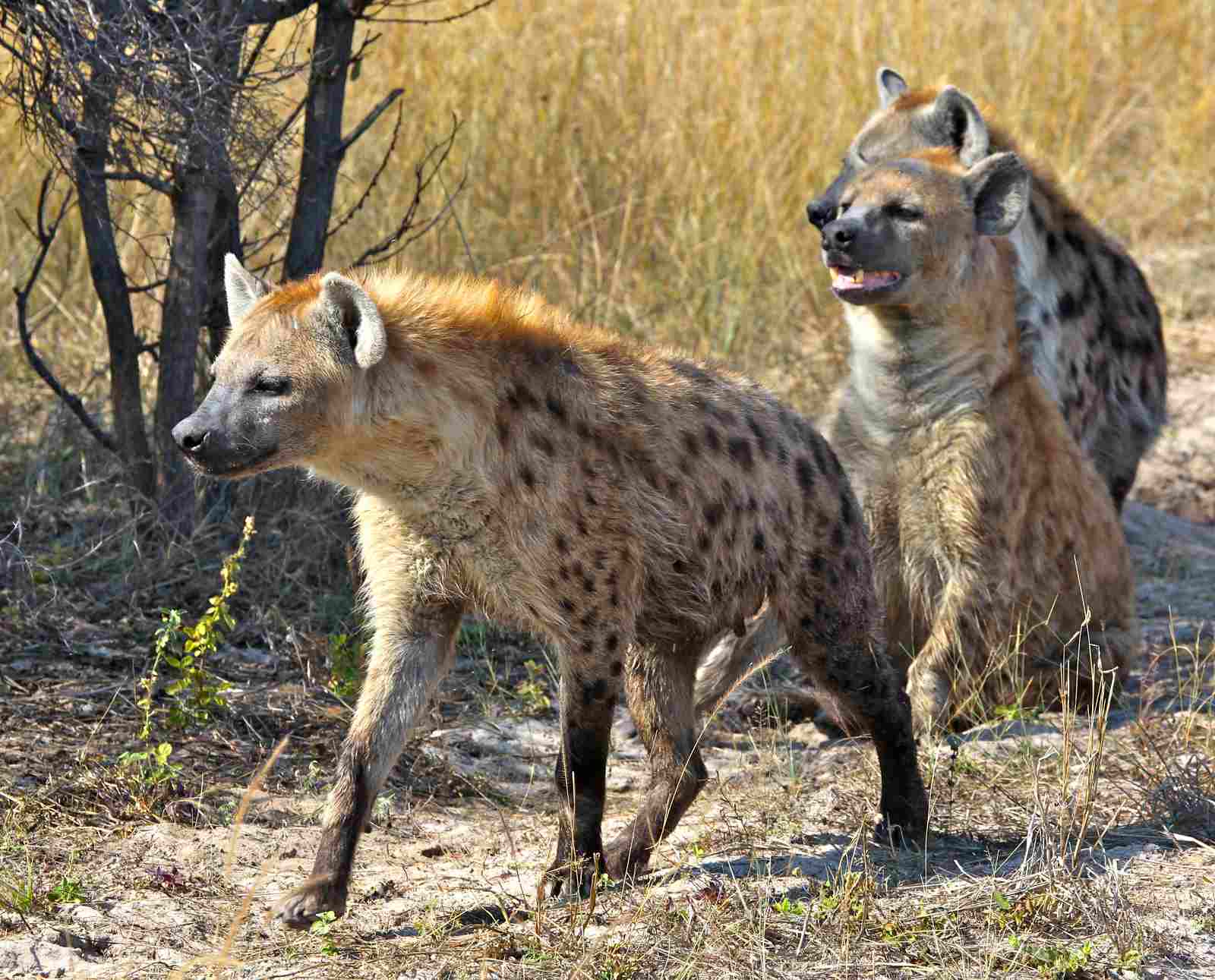
11). Reproduction
Leopards are viviparous, meaning they give birth to live young. After a gestation period of approximately 90 to 105 days, female leopards typically give birth to a litter of two to three cubs. The cubs are born blind and helpless, relying on their mother for nourishment and protection. The female leopard will nurse her cubs for several months before gradually introducing them to solid food and teaching them essential hunting skills. This reproductive strategy allows leopards to ensure the survival of their offspring by providing them with the necessary care and guidance.
Hyenas, on the other hand, are also viviparous and give birth to live young. The gestation period for hyenas is slightly longer, lasting around 110 days. Female hyenas usually give birth to one or two cubs, which are born with their eyes open and are capable of walking shortly after birth. The cubs are raised within the social structure of the hyena clan, with the dominant female playing a crucial role in their upbringing. This cooperative parenting system allows for the sharing of resources and protection of the young, increasing their chances of survival.
In terms of reproduction, leopards and hyenas have different strategies that suit their ecological roles and social structures. While leopards invest more in individual care and teaching their cubs, hyenas rely on the support of the clan to raise their young. These strategies contribute to the successful reproduction and survival of both species in their respective environments.
12). Danger Posed to Humans
When it comes to the danger posed to humans, both leopards and hyenas have the potential to come close to human settlements. However, their behavior towards humans differs significantly.
Leopards are generally elusive and solitary animals, preferring to avoid human contact. They are known to be secretive and stealthy, making it rare for them to be seen in close proximity to human settlements. While leopards have been known to occasionally attack humans, these incidents are relatively rare. Precautions should still be taken if you encounter a leopard, such as maintaining a safe distance and avoiding any sudden movements that may provoke an attack.
On the other hand, hyenas are more adaptable to human presence and can be found in close proximity to human settlements, particularly in areas where food sources are readily available. While hyenas are not typically aggressive towards humans, they can become bold and opportunistic if they perceive humans as a threat or if food is easily accessible. It is important to exercise caution and avoid feeding or approaching hyenas, as this can lead to habituation and potentially dangerous encounters.
In terms of the rate of human deaths caused, leopards are responsible for a higher number of fatalities compared to hyenas. However, it is crucial to note that both species generally prefer to avoid human confrontations and attacks are rare.
While both leopards and hyenas have the potential to pose a danger to humans, the likelihood of encountering a dangerous situation is relatively low.
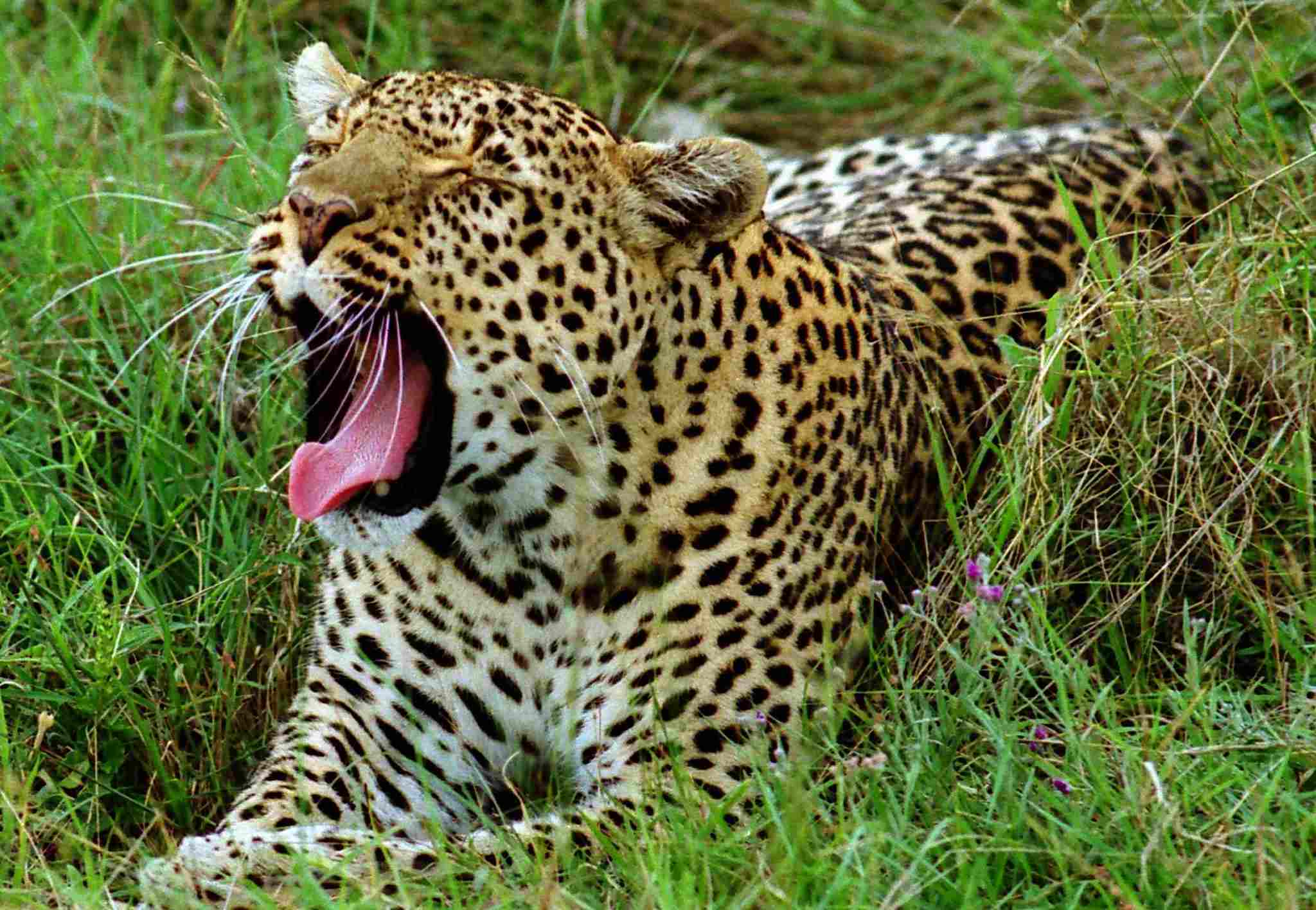
13). Intelligence
Leopards are known for their exceptional problem-solving skills and adaptability. They are highly skilled hunters, capable of strategizing and executing successful hunting techniques. Leopards are also known to be excellent climbers, using their intelligence to navigate trees and escape potential threats. Their ability to camouflage themselves in their surroundings further demonstrates their intelligence and resourcefulness.
On the other hand, hyenas are highly social animals that exhibit complex social structures and communication systems. They rely on their intelligence to coordinate group hunts and defend their territories. Hyenas also display remarkable problem-solving abilities, often using their intelligence to outsmart their prey or competitors.
While both leopards and hyenas possess intelligence, it is difficult to determine which animal is more intelligent. Their intelligence is specialized for their respective lifestyles and survival strategies. Leopards rely on their individual intelligence to hunt and survive, while hyenas rely on their social intelligence to thrive in a group setting.
14). Tracks
When comparing the tracks of leopards and hyenas, there are distinct differences that can help identify which animal has passed through an area. Leopards have tracks that are characterized by their round shape and four toe pads. The toe pads often show claw marks, indicating the presence of retractable claws. These tracks are usually smaller in size compared to hyena tracks.
On the other hand, hyena tracks are larger and more elongated in shape. They have four toe pads as well, but their tracks often show claw marks that are more prominent and spread out. Hyena tracks also tend to have a more irregular shape, reflecting their unique gait.
By examining the tracks left behind, researchers and wildlife enthusiasts can gather valuable information about the presence and behavior of these animals in a particular area. The size and shape of the tracks can provide insights into the size and weight of the animal, while the presence of claw marks can indicate the use of claws for hunting or defense.
15). Conservation Status
When it comes to the conservation status of leopards and hyenas, both animals face significant challenges in the wild. Leopards are listed as “vulnerable” on the IUCN Red List, while hyenas are classified as “least concern.”
Leopards are primarily threatened by habitat loss and fragmentation, as well as poaching for their beautiful fur and body parts. The destruction of their natural habitats due to human activities, such as deforestation and urbanization, has led to a decline in their populations. Additionally, conflicts with humans, including retaliatory killings and accidental trapping, further contribute to their vulnerability.
On the other hand, hyenas have a more stable conservation status, mainly due to their adaptability and wide distribution across various habitats in Africa and parts of Asia. While they may face localized threats such as habitat loss and persecution, their ability to thrive in different environments has helped maintain their populations.
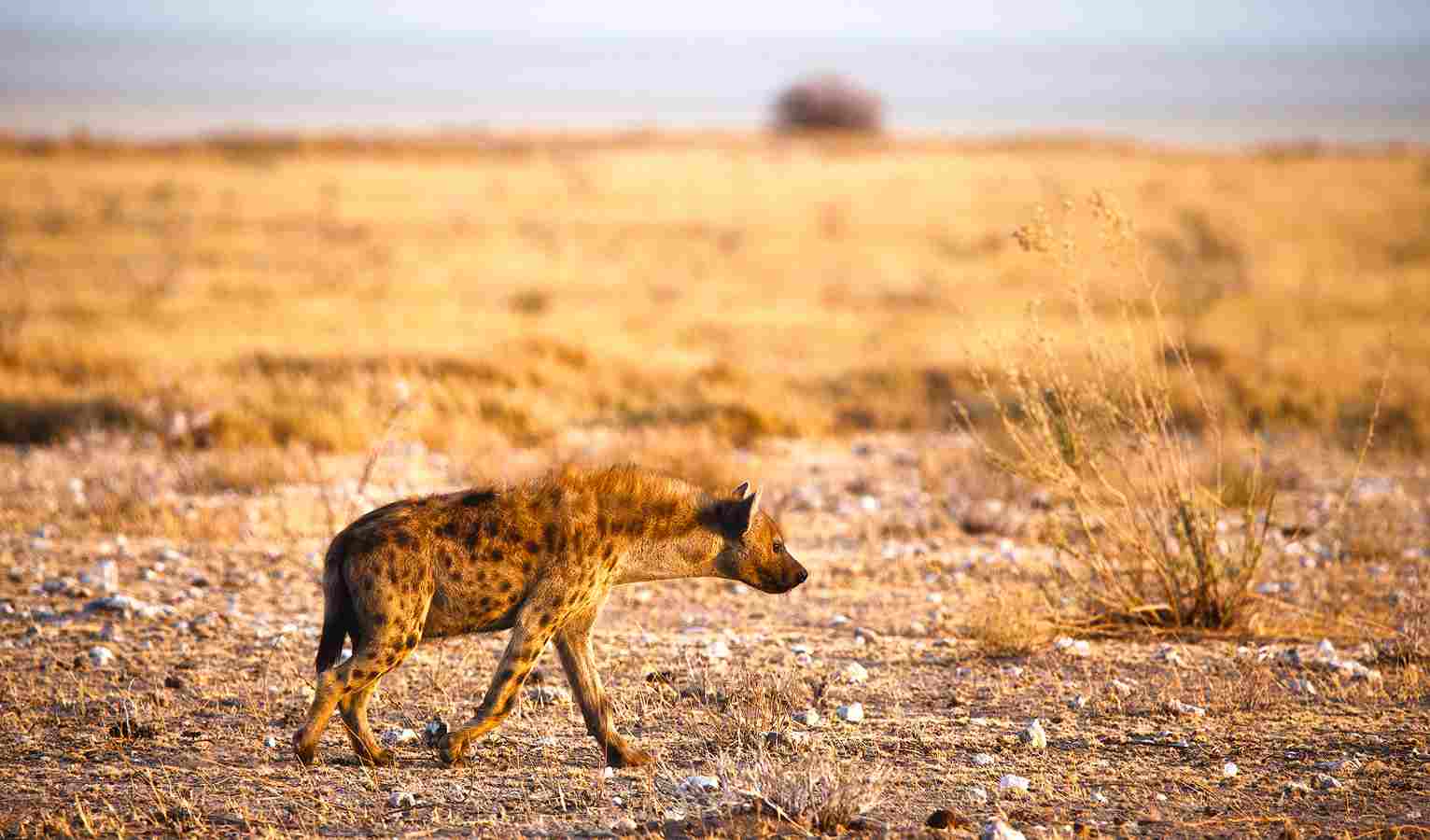
Conclusion
I). SIMILARITIES
In comparing leopards and hyenas, it is evident that these two animals share some similarities. Both are highly adaptable predators that have successfully survived in various habitats. They are also known for their intelligence and cunning hunting techniques, making them formidable predators in their respective ecosystems. Additionally, both leopards and hyenas play crucial roles in maintaining the balance of their ecosystems by controlling prey populations.
II). DIFFERENCES
Despite their similarities, there are significant differences between leopards and hyenas. One notable difference is their physical appearance. Leopards have a sleek and muscular build, with their distinctive rosette patterns providing excellent camouflage in their surroundings. On the other hand, hyenas have a more robust and stocky build, with a unique sloping back and powerful jaws.
Another difference lies in their hunting strategies. Leopards are solitary hunters, relying on their stealth and agility to ambush their prey. They are known for their ability to climb trees and drag their kills up into the branches for safekeeping. In contrast, hyenas are highly social animals that hunt in packs. They use their endurance and teamwork to wear down their prey, often scavenging from other predators’ kills as well.
